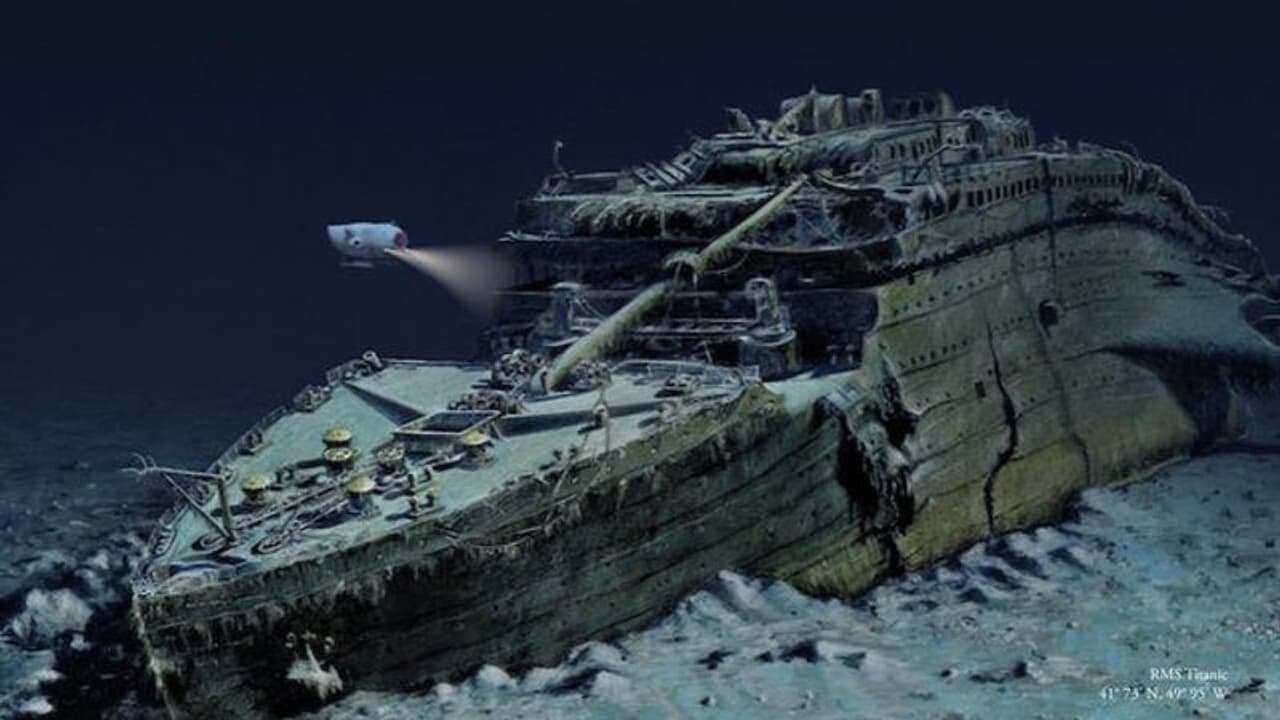A massive search and rescue effort is under way in the North Atlantic to locate a lost submersible vessel that takes tourists to the Titanic debris in a voyage through time.
A submarine on a tourism expedition to explore the wreckage of the Titanic went missing on Monday off the coast of southeastern Canada, sending shockwaves worldwide. The missing vessel, which is being searched for by the Canadian and Boston coast guards, belongs to the tour operator OceanGate Expeditions.

OceanGate Expeditions, which offers luxury adventure trips, confirmed that one of its vessels had gone missing while on a dive at the wreck site.
“We are exploring and mobilising all options to bring the crew back safely. Our entire focus is on the crewmembers in the submersible and their families," a spokesperson said.
“We are deeply thankful for the extensive assistance we have received from several government agencies and deep sea companies in our efforts to reestablish contact with the submersible. We are working toward the safe return of the crewmembers," the company added.
Media reports said the Coast Guard has launched search-and-rescue operations.
It is unknown how many people were on board when it vanished, but OceanGate's Titan vessel, which was created specifically for diving the Titanic, can accommodate five people, including paying "mission specialists" and staff. Each person's ticket to one of its expeditions costs $250,000 (£195,000).
The Titan submersible is only capable of providing 96 hours of life support, according to the OceanGate's website.
All about the Titanic survey expedition
Due to an inadequate number of lifeboats and shoddy safety precautions, the passenger liner Titanic sank in April 1922 after hitting an iceberg during its inaugural journey from Southampton to New York City, killing more than 1,500 people. The wreck, which had been lost to human explorers for many years, was recovered in 1985 in the North Atlantic Ocean, around 3800 metres off the shore of Newfoundland, Canada.
Since then, it has been extensively studied, but because to its depth and high water pressure, it is famously difficult to access, even for most submarines. Titanic filmmaker James Cameron documented his own difficult journeys to the wreck in the 2003 movie Ghosts of the Abyss.
OceanGate has developed adventure packages recently that let visitors experience being "one of the few to see the Titanic with your own eyes" in its specially made deep-diving submersibles.
Watch the Titanic survey expedition here:
Large boats are generally used to transport passengers on the eight-day tours, which depart from St. John's, Newfoundland; earlier this month, the Canada-flagged research vessel Polar Prince operated on the route.
Small submersibles are let loose from the ship as soon as they arrive at the dive destination. It typically takes eight hours to descend to the ocean floor, explore the wreck, and then return to the surface.
In 2021, OceanGate first performed a series of dives to the Titanic, then in 2022, they went back for another six-week mission. The company previously recalls collaborating with NASA engineers to build its Titan submarine, bragging of its "multiple, redundant safety systems" that "can determine if the hull is compromised well before situations become life-threatening, and safely return to the surface".
“The ability to construct Titan’s pressure hull with aerospace grade carbon fiber and manufacturing protocols results in a submersible which weighs a fraction of what other deep diving crewed submersibles weigh," it said.
“This weight reduction allows us to carry a significantly greater payload which we use to carry five crewmembers: a pilot, researchers, and mission specialists. Titan represents a consequential step forward for human exploration of the ocean which few realize constitutes 99 per cent of Earth’s livable volume," the company added.
Submersibles, which are frequently employed for deep-sea diving, are different from submarines in that they cannot propel themselves on lengthy voyages. While military nuclear submarines may remain submerged for weeks at a time, OceanGate claims its Titan vessel can offer "96 hours of life support".
The only deep diving sub with a toilet is the Cyclops-class manned submersible, which can carry five people to depths of 4,000 metres. According to OceanGate's website, travellers often bring "a sandwich for lunch".
In 2021, Bill Price, the retired president of a travel company, noted, "The Titanic expedition isn’t for everyone. But if you are a risk taker, have a desire to learn about history and dive technology, want to play a hands-on role in an expedition, and are in a place in life where it makes sense financially, it’s a great fit.”
However, given that the Titanic wreck site also acts as a memorial for many of the passengers who died onboard the ocean liner, the growing tourism associated with it is very contentious.
In order to restrict access to the wreckage and stop the removal of artefacts, the US, UK, and Canada reached an agreement in 2019. Canada has not yet ratified the agreement, though.
